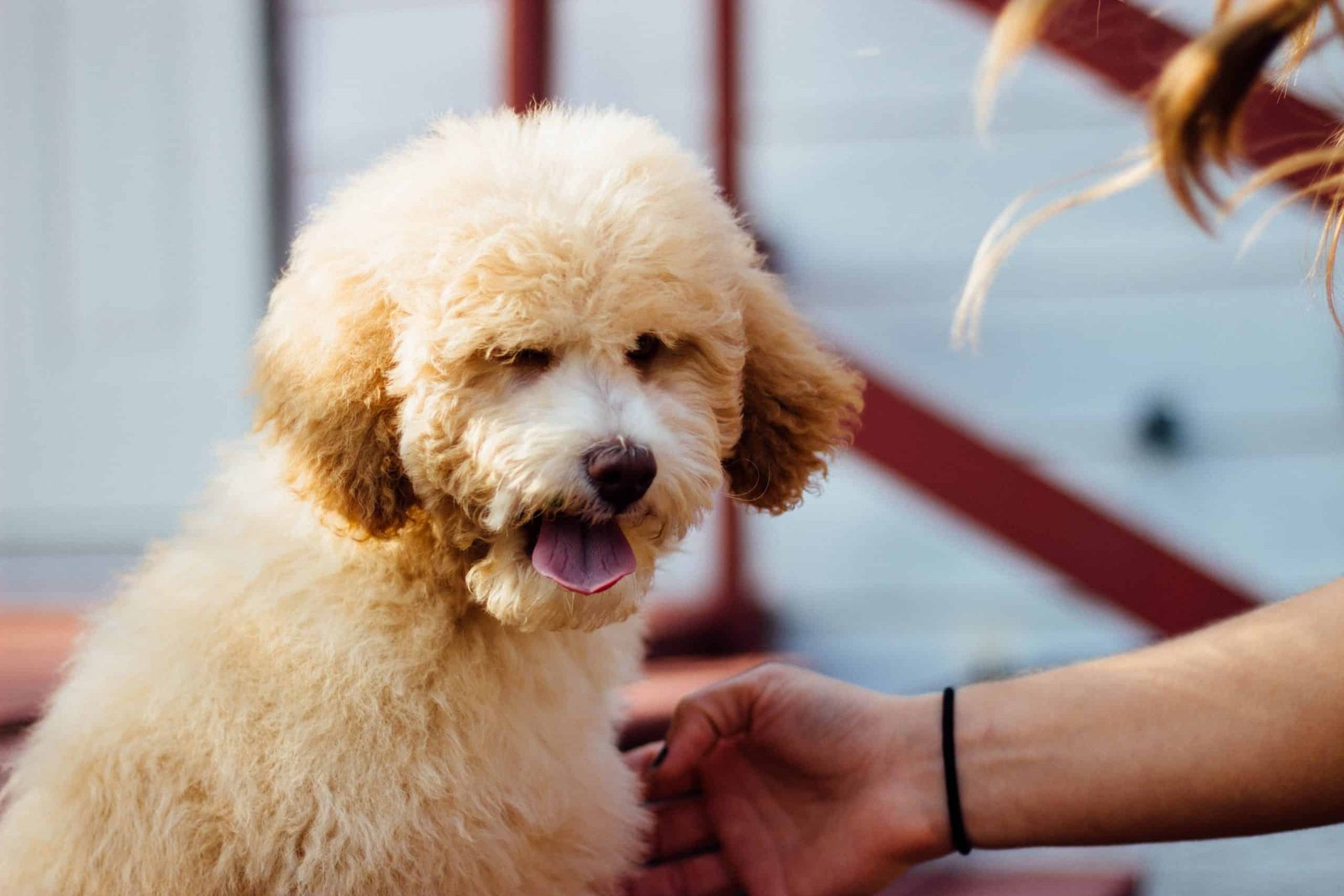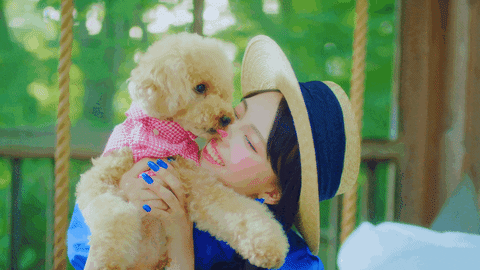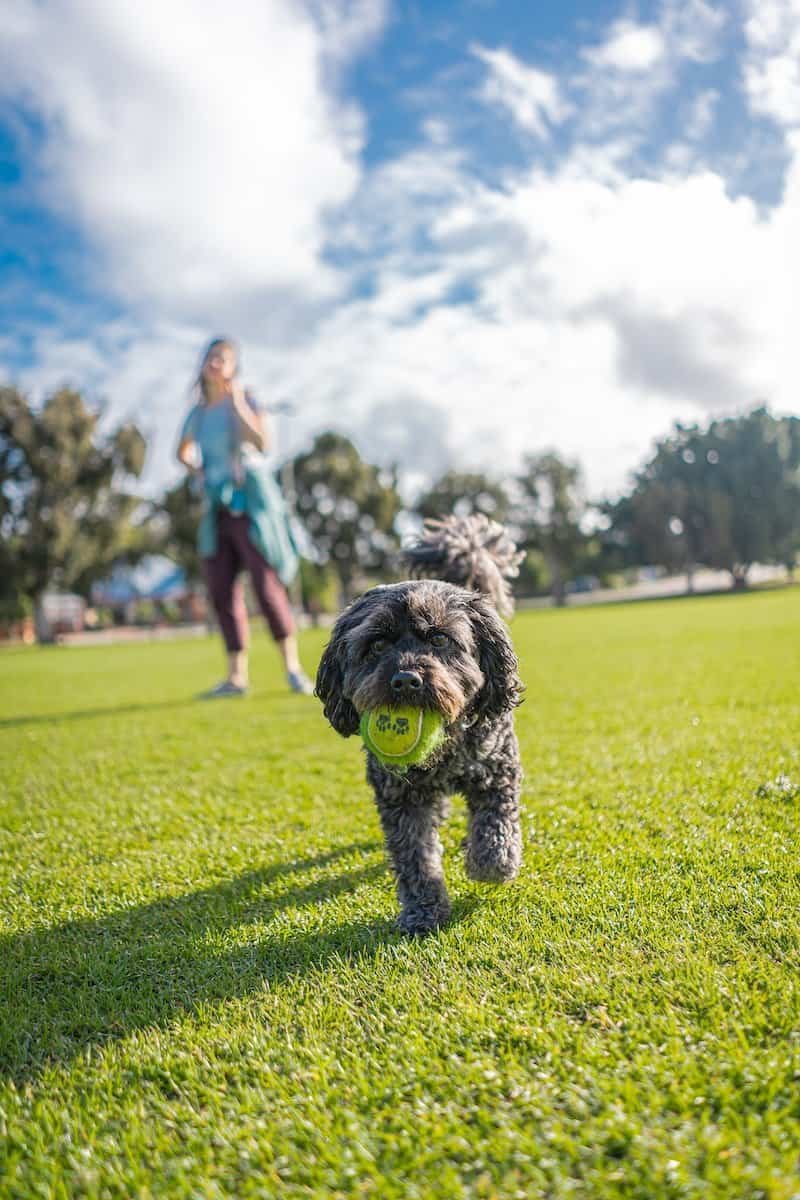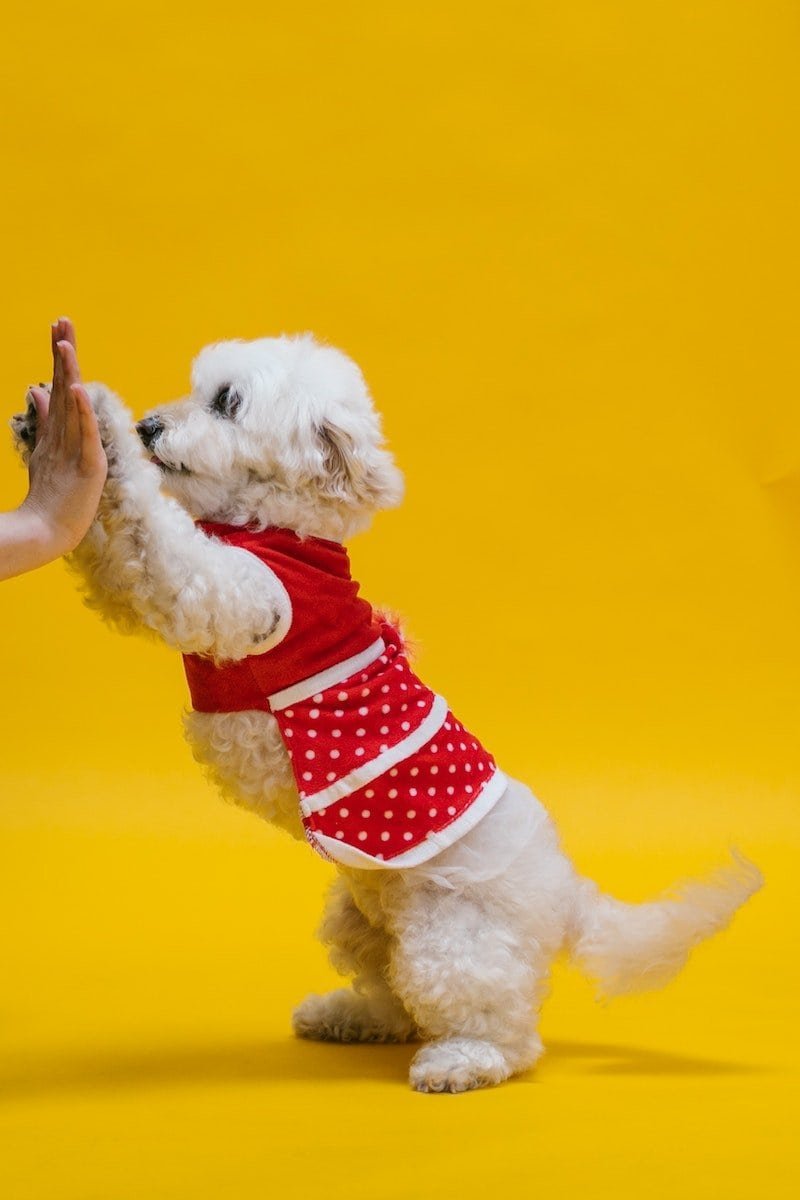Training your poodle to come when called is an essential part of responsible pet ownership. Not only does it keep your furry friend safe, but it also allows you to enjoy off-leash activities with peace of mind. However, recall training can be challenging, especially if your poodle is easily distracted or stubborn. But with patience, consistency, and positive reinforcement, you can teach your poodle to come when called reliably.
To train your poodle to come when called, you must first understand the importance of recall training. Recall is a life-saving command that can prevent your poodle from running into traffic, getting lost, or getting into dangerous situations. It also allows you to keep your poodle under control in public places or around other dogs. Additionally, recall training strengthens the bond between you and your poodle and provides mental stimulation for your furry friend.
In this article, we will explore the basic principles of dog training and provide step-by-step instructions on how to train your poodle to come when called. We will also discuss the importance of using rewards in training, fun recall games to play, and how to deal with distractions. Finally, we will provide troubleshooting tips for common issues and additional resources for further reading.
From Our Experience: As poodle enthusiasts who have worked with hundreds of poodle owners and rescue organizations over the years, we’ve gathered real-world insights that go beyond textbook knowledge. The information in this article reflects both professional expertise and hands-on experience with poodles of all sizes and temperaments.
Understanding Your Poodle
To effectively train your poodle to come when called, it’s important to understand their behavior and personality. Poodles are highly intelligent and active dogs that thrive on mental and physical stimulation. As a puppy, your poodle will be curious, playful, and eager to please. It’s important to start training them early to establish good behavior habits and a strong bond between you and your furry friend.
As a responsible dog owner, you should be aware of the American Kennel Club’s (AKC) guidelines for raising a poodle puppy. The AKC recommends starting training as early as eight weeks old, which is when most puppies are weaned and ready to leave their mother. This is the perfect time to start socializing your poodle with other dogs and people, as well as introducing them to basic commands like “sit,” “stay,” and “come.”
When training your poodle, it’s important to establish a training schedule and stick to it. Consistency is key to successful training, and your poodle will respond best to a routine that they can rely on. Make sure to use positive reinforcement techniques, like treats and praise, to encourage good behavior. Avoid using negative reinforcement, like yelling or physical punishment, as this can damage your relationship with your poodle and make them fearful or aggressive.
To better understand your poodle’s behavior, it’s important to observe them closely and look for signs of stress or anxiety. Poodles are sensitive dogs and may become anxious or fearful in certain situations. If you notice your poodle exhibiting signs of stress, like panting, pacing, or whining, it’s important to remove them from the situation and provide comfort and reassurance.
In summary, understanding your poodle’s behavior and personality is key to successful training. Starting early, establishing a routine, using positive reinforcement, and observing your poodle’s behavior are all important factors to consider when training your furry friend to come when called. By following these guidelines and being patient and consistent, you can build a strong bond with your poodle and enjoy a happy and harmonious relationship for years to come.
Importance of Recall Training
As a poodle owner, you know that training your furry friend is essential for having a well-behaved dog. One of the most important skills you can teach your poodle is recall or coming when called. Recall training is crucial for emergency situations and the safety of your dog.
A well-trained dog will come back to you when called, even if they are distracted by something else. This skill is particularly important when your dog is off-leash in an open area, such as a park, where there are many distractions. By having a reliable recall, you can ensure that your dog stays safe and doesn’t run off.
Recall training is also essential for building a strong relationship with your poodle. When a dog knows that they can trust their owner and that coming when called is rewarding, they are more likely to obey commands and behave well in other situations.
It’s important to start recall training as early as possible. Poodle puppies can start learning recall from as early as 8 weeks old. Consistency is key, and you should make sure to reward your poodle every time they come when called. By doing so, you reinforce the behavior and make it more likely that your dog will come back to you in the future.
In conclusion, recall training is a vital skill for your poodle’s safety and well-being. By starting early and being consistent, you can ensure that your dog is well-trained and obedient. With a reliable recall, you can enjoy off-leash walks and have peace of mind knowing that your poodle will come back to you when called.
Basic Principles of Dog Training
Training your poodle to come when called is an important aspect of dog ownership. Before delving into the specifics of how to train your poodle, it is important to understand some basic principles of dog training.
First and foremost, positive reinforcement is the most effective method of training. Rewarding your poodle for good behavior will encourage them to repeat that behavior in the future. This can be done through treats, praise, and playtime. Consistency is also key when it comes to training. You should establish a routine and stick to it, ensuring that everyone in the household is on the same page.
Punishment should be avoided as it can lead to fear and anxiety in your poodle. Instead, focus on redirecting your poodle’s behavior and rewarding them when they exhibit desirable behavior.
It is also important to understand that training is an ongoing process. Your poodle will not learn everything overnight, and it will take time and patience to see results.
By following these basic principles of dog training, you will be setting yourself and your poodle up for success.
Getting Started with Recall Training
Training your poodle to come when called is an essential skill that can keep your pup safe and give you peace of mind. By teaching your poodle to come on command, you can prevent them from running off or getting into dangerous situations.
To start, choose a recall command that you will use consistently. Some popular options include “come,” “here,” or “recall.” Once you have chosen a command, stick with it to avoid confusing your poodle.
Next, begin training your poodle in a low-distraction environment, such as your home or backyard. Start by putting your poodle on a leash and saying their name followed by the recall command. When your poodle comes to you, reward them with praise and a treat.
Repeat this process several times, gradually increasing the distance between you and your poodle. As your poodle becomes more confident, you can remove the leash and practice recall in a larger area.
When practicing recall, it’s important to always reward your poodle for coming to you, even if they took a while to respond. This will reinforce the behavior and encourage your poodle to come to you more quickly in the future.
In addition to practicing recall in a low-distraction environment, it’s also important to practice recall in a high-distraction environment. This will help your poodle learn to come to you even when there are other distractions around.
One way to practice recall in a high-distraction environment is to have a friend or family member hold your poodle’s leash while you walk a short distance away. Call your poodle using the recall command, and have your friend release the leash when your poodle starts to come to you. Reward your poodle with praise and a treat when they reach you.
Another important aspect of recall training is teaching your poodle to come to you when you need to grab their collar. This can be important in emergency situations or when you need to quickly restrain your poodle.
To teach your poodle to come to you for a collar grab, practice recall as usual, but when your poodle reaches you, gently grab their collar and give them a treat. This will help your poodle learn to associate the collar grab with a positive experience.
With consistent training and positive reinforcement, your poodle will soon learn to come to you on command, even in distracting environments. By mastering this skill, you can help keep your poodle safe and give them the freedom to explore their surroundings.
Using Rewards in Training
One of the most effective ways to train your poodle to come when called is by using rewards. Positive reinforcement is a powerful tool that can help your dog associate good behavior with rewards. In this section, we’ll explore how to use rewards to train your poodle effectively.
High-Value Treats
One of the best ways to reward your poodle for good behavior is by providing them with high-value treats. These treats should be something that your dog loves and is willing to work for. Examples of high-value treats include small pieces of cheese, cooked chicken, or hot dogs. When training your poodle to come when called, make sure to use high-value treats to reinforce good behavior.
Praise
In addition to high-value treats, praise is another powerful reward that can be used to train your poodle. When your dog comes when called, make sure to give them plenty of praise and affection. Use a happy and enthusiastic tone of voice to let your poodle know that they’ve done a good job.
Consistency
Consistency is key when it comes to using rewards in training. Make sure to use the same rewards every time your poodle comes when called. This will help them associate good behavior with positive reinforcement. It’s also important to be consistent with the timing of the rewards. Make sure to give your poodle a treat or praise immediately after they come when called.
Positive Reinforcement
Positive reinforcement is a training technique that involves rewarding good behavior and ignoring bad behavior. When training your poodle to come when called, it’s important to focus on positive reinforcement. This means rewarding your dog for coming when called and ignoring them when they don’t. Over time, your poodle will learn that good behavior is rewarded and bad behavior is not.
Conclusion
Using rewards in training is an effective way to train your poodle to come when called. By providing high-value treats, praise, and positive reinforcement, you can help your dog associate good behavior with rewards. Remember to be consistent and use positive reinforcement to help your poodle learn quickly and effectively.
Fun Recall Games to Play
Training your poodle to come when called can be challenging, but it doesn’t have to be boring. Incorporating fun recall games into your training routine can make the process more enjoyable for both you and your furry friend. Here are some games you can play to make recall training more fun:
Hide-and-Seek
This classic game is a great way to teach your poodle to come when called. Start by having your dog sit and stay while you hide somewhere in the house or yard. Once you’re hidden, call your dog’s name and say “come.” When your poodle finds you, reward them with a treat and lots of praise. As your dog gets better at finding you, you can make the game more challenging by hiding in harder-to-find places.
Hot Potato
In this game, you and a friend or family member stand a short distance apart with your poodle in the middle. One person calls the dog’s name and says “come,” then tosses a toy or ball to the other person. When the dog retrieves the toy, the other person calls their name and says “come,” and tosses the toy back. Keep playing until your dog is tired or you’ve run out of toys.
Catch Me
This game is similar to hot potato, but instead of tossing a toy, you run away from your poodle and call their name. When your dog catches up to you, reward them with a treat and lots of praise. As your dog gets better at catching you, you can increase the distance you run or add obstacles to make the game more challenging.
Find Me
In this game, you hide somewhere in the house or yard and call your dog’s name. When your poodle finds you, reward them with a treat and lots of praise. As your dog gets better at finding you, you can make the game more challenging by hiding in harder-to-find places.
Remember to keep the games short and fun, and always end on a positive note. With consistent practice, your poodle will learn to come when called in no time!
Dealing with Distractions
Training your poodle to come when called is an essential part of responsible dog ownership. However, it can be challenging to achieve reliable recall when distractions are present. Distractions can be anything from movement to other dogs, people, or objects in the environment. Therefore, it is crucial to train your poodle to ignore distractions in any environment.
One way to train your poodle to ignore distractions is to start with a low-level distraction and gradually increase the level of distraction as your poodle becomes more proficient. For example, if your poodle is easily distracted by movement, start by training your poodle in a quiet environment with no movement. Once your poodle is comfortable with this, gradually introduce movement, such as waving your arms or walking around the room.
Another way to train your poodle to ignore distractions is to use positive reinforcement. Positive reinforcement involves rewarding your poodle for good behavior. For example, if your poodle comes when called despite a distraction, reward them with their favorite treat or toy. This will reinforce the behavior and make it more likely that your poodle will come when called in the future.
Training your poodle to ignore distractions can be challenging, especially if you are training outside or in a dog park. In these environments, there are many distractions, and your poodle may be more interested in exploring the environment than listening to you. Therefore, it is essential to start training your poodle in a quiet environment and gradually increase the level of distraction as your poodle becomes more proficient.
In summary, distractions can be a significant challenge when training your poodle to come when called. However, with patience and persistence, you can train your poodle to ignore distractions and come when called reliably. Remember to start with low-level distractions and use positive reinforcement to reinforce good behavior. With these techniques, you can have a well-trained poodle that comes when called, even in the most distracting environments.
Advanced Recall Training
Now that your poodle has mastered the basics of recall training, it’s time to move on to more advanced techniques. These methods will help ensure that your poodle will come to you no matter what distractions or distance are present.
Off-Leash Training
Training your poodle to come when called off-leash is a significant milestone in recall training. However, it’s essential to ensure that your poodle is ready before attempting this technique. Start by practicing in a secure, enclosed area and gradually increase the distance and distractions. Always keep an eye on your poodle and be ready to intervene if necessary.
Long Line Training
Long line training involves using a long leash to allow your poodle more freedom while still maintaining control. This technique is useful for practicing recall training in larger spaces while keeping your poodle safe. Gradually increase the length of the line as your poodle becomes more confident and reliable.
Distance Training
To ensure that your poodle comes when called, even at longer distances, gradually increase the distance between you and your poodle during training. Always ensure that your poodle is comfortable and confident at each distance before moving on to the next. Remember to reward your poodle generously for each successful recall.
Proofing
Proofing your poodle’s recall training involves practicing in various environments and with different distractions. Start with minor distractions and gradually increase the difficulty level. Always ensure that your poodle is comfortable and confident before moving on to more challenging environments.
By using these advanced recall training techniques, you can help ensure that your poodle comes when called, no matter what the situation. Remember to always keep training sessions positive and rewarding for your furry friend.
Troubleshooting Common Issues
Training your poodle to come when called can be a challenging task. Even with the best intentions, you may encounter some common issues that can make the process more difficult. Here are some tips to help you troubleshoot these issues:
Ignoring the Recall Command
One of the most common issues is when your poodle ignores the recall command. This can happen for several reasons, including distractions, lack of motivation, or fear. To address this issue, you can try the following:
- Use high-value treats to motivate your poodle
- Practice in a quiet, distraction-free environment before moving to more challenging settings
- Use a long leash to prevent your poodle from running away and reinforce the recall command
Punishing Your Poodle
Punishing your poodle for not coming when called is not an effective training method. It can create fear and anxiety, and your poodle may associate the recall command with punishment. Instead, focus on positive reinforcement and reward your poodle for coming when called.
Fear or Anxiety
If your poodle is fearful or anxious, it may be more challenging to train them to come when called. In this case, you should focus on building trust and confidence. Start by using a calm and reassuring tone of voice, and avoid using force or punishment. Use treats and praise to reward your poodle for coming when called.
Training Mistakes
Training mistakes can happen, even with the best intentions. Some common mistakes include:
- Inconsistency: Using different recall commands or training methods can confuse your poodle
- Timing: Rewarding or punishing your poodle at the wrong time can be ineffective
- Lack of patience: Training takes time and patience. Rushing the process can lead to frustration and setbacks.
If you encounter any of these issues, take a step back and reassess your training approach. Be patient and consistent, and focus on positive reinforcement to help your poodle learn to come when called.
Additional Resources
If you’re interested in further resources to help you train your poodle to come when called, there are several options available.
Related Article
One great place to start is with a related article. The American Kennel Club provides a step-by-step guide on how to train your dog to come when called. While the article is not specific to poodles, the tips and techniques can be applied to any breed.
Five Commands
Another resource to consider is the “Five Commands” program offered by many dog trainers. This program focuses on teaching your dog five essential commands, including “come.” By mastering these commands, your poodle can become a well-behaved companion.
E-Book
If you prefer a more comprehensive resource, consider an e-book like “Poodle Training Basics” by Susan Day. This book covers everything from basic obedience to advanced tricks, and includes tips specifically for poodles.
Basic Five Commands E-Book
For a more focused resource, you might try “The Basic Five Commands” e-book by Doggy Dan. This book provides step-by-step instructions for teaching your dog the five most important commands, including “come.”
Affiliate Advertising Programs
It’s important to note that some of these resources may be offered through affiliate advertising programs. This means that the author or publisher may receive a commission if you purchase the resource through their link. While this does not necessarily mean the resource is low-quality or biased, it’s important to keep this in mind when evaluating the information provided.
Frequently Asked Questions
If you’re struggling with training your poodle to come when called, you’re not alone. Here are some frequently asked questions about teaching recall to a dog.
How can I train my poodle to come when called?
Training your poodle to come when called requires patience, consistency, and positive reinforcement. Start by choosing a distinct command word and practicing in a controlled environment. Gradually increase the distance and distractions to help your dog generalize the behavior. Use treats, toys, and praise to reward your dog for coming when called.
What are some effective techniques for teaching recall to a dog?
Some effective techniques for teaching recall to a dog include using a long line, practicing in a fenced area, and using a whistle or clicker. You can also use a “jackpot” reward for particularly good responses, or incorporate games like hide-and-seek to make the training more fun.
How do I get my dog to come inside when called?
To get your dog to come inside when called, start by practicing in a controlled environment like your backyard. Use a distinct command word and reward your dog for coming inside. Gradually increase the distance and distractions to help your dog generalize the behavior. You can also use a leash or long line to guide your dog inside.
What should I do if my dog won’t come when I call them?
If your dog won’t come when you call them, it’s important to remain calm and avoid punishment. Instead, try to determine why your dog is not responding. Are there distractions or fear triggers in the environment? Is your dog in pain or discomfort? Address any underlying issues and consider seeking the help of a professional trainer or behaviorist.
How can I teach my puppy to come when I say their name?
To teach your puppy to come when you say their name, start by using a distinct tone of voice and rewarding your puppy for looking at you. Gradually increase the distance and distractions to help your puppy generalize the behavior. Use treats, toys, and praise to reward your puppy for coming when called.
What are some tips for catching a dog that won’t come to me?
If your dog won’t come to you, it’s important to avoid chasing them or using force. Instead, try to encourage them to come to you using treats, toys, or a familiar tone of voice. You can also try moving away from your dog to make them curious and follow you. If necessary, use a long line or seek the help of a professional trainer or behaviorist.







